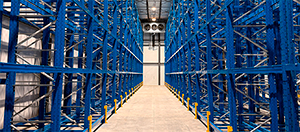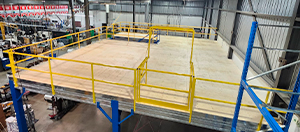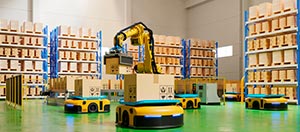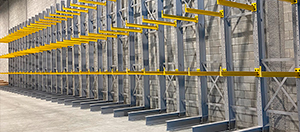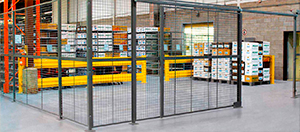In the world of logistics, space is a rare and expensive commodity. For warehouses aiming at a very high storage density, the choice of shelving system is not random. This is a crucial trade-off between maximum capacity, speed of access and inventory management.
Forget the simple selective pallet racks. When every cubic meter counts, you must turn to solutions that eliminate or minimize aisles. But how to choose between a FIFO / LIFO system and an automated investment?
Here is a guide to help you determine the ideal type of rack to maximize your density.
Step 1: The Key Factor – DENSITY vs. SELECTIVITY Arbitrage
Before analyzing systems, ask yourself this fundamental question: Is quick access to EVERY pallet critical?
- Maximum Density Priority (Low Selectivity): If you store a small number of references (SKU) in very large volume (mass storage), you can afford to sacrifice direct access in favor of density.
- Focus on Selectivity (High Vertical Density): If you have a large number of different SKUs and need to quickly access each reference, you should opt for solutions that optimize height rather than depth.
Step 2: The Density Champions (Low Selectivity)
These systems allow pallets to be accumulated at depth, eliminating the majority of aisles.
- The Drive-In / Drive-Through Shelving
It is the densest system on the ground surface.
- Principle: The forklift penetrates directly into the rack structure.
- Stock Management:
- Drive-In: Works in LIFO (Last-In, First-Out). Ideal for products without an expiration date (e.g. building materials, raw materials).
- Drive-Through: Works in FIFO (First-In, First-Out), because loading is done on one side and unloading on the other. - Points of vigilance: Risk of damage to the racks higher (the cart circulates inside) and very low selectivity.
- Push-Back Shelving
An excellent compromise between density and accessibility by reference.
- Principle: The pallets are stored on trolleys sliding on inclined rails. Loading and unloading are done exclusively from the aisle: each new pallet pushes the previous one backwards.
- Stock Management: LIFO (by channel).
- Advantages: The cart does not fit into the rack, reducing damage and cycle times. Each channel can store a different reference.
- Dynamic Shelving (Pallet Flow)
The essential tool of high-density FIFO.
- Principle: The pallets slide on inclined roller beds (by gravity), from the loading area to the picking area.
- Stock Management: Strictly FIFO.
- Ideal for: Perishable products (agri-food), products with DLC or requiring a perfect rotation.
- The Automatic Shuttle (Pallet Shuttle)
The future of non-automated density.
- Principle: A motorized shuttle moves in the rack channel to drop off or retrieve the pallets. The operator only places and removes the shuttle and the pallets on the front.
- Advantages: Extremely high density, reduced damage and errors. Can handle LIFO or FIFO.
- Disadvantages: Highest initial investment cost in this category.
Step 3: The Vertical Solution (High Selectivity)
If you need a high density while maintaining direct access to each pallet, you should use the height of your building to the maximum.
Very Narrow Aisle (VNA) Shelving
- Principle: The traffic lanes are reduced to a strict minimum (sometimes less than 2 meters), thus increasing the ratio of surface devoted to storage.
- Selectivity: 100% (access to each pallet).
- Specialized Equipment: Requires specific forklifts (tri-directional or turret) and a perfectly flat floor.
- Ideal for: Warehouses with high ceilings and a large number of SKUs requiring quick access.
Ultimately, choosing the right high-density rack means meticulously analyzing your stock profile: its rotation (FIFO/LIFO), the number of SKUs and the height of your building. A well-planned investment in the right system will result in considerable savings in floor space and increased logistics efficiency over the long term.

_239.png)
_293.png)
_785.png)
